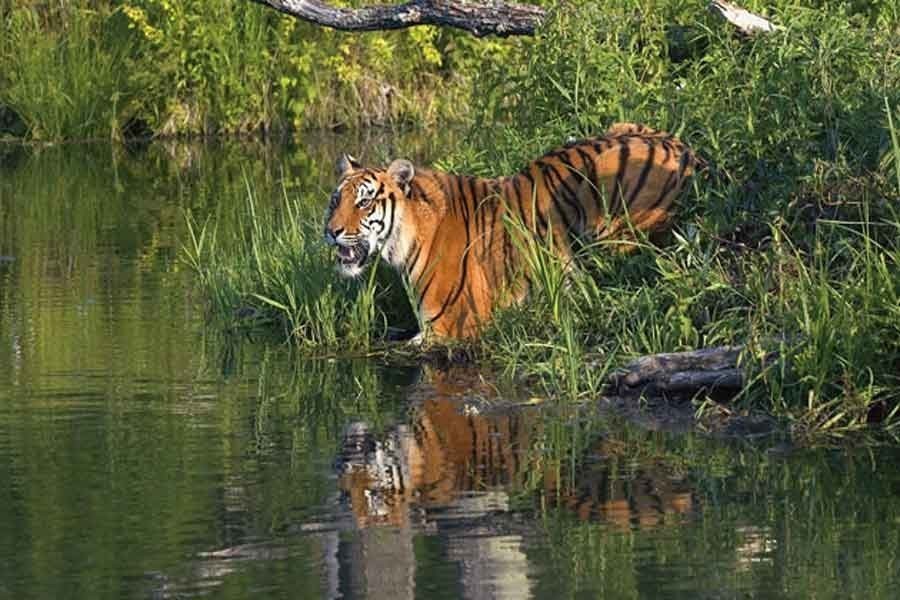
Published :
Updated :

Saturday's online edition of the Bengali daily ProthomAlo carried the report of how a Nilgai, said to be the largest Asian antelope, died at Bhabanipur, a village under HaripurUpazila in the northern district of Thakurgaon. The antelope crossed the barbed wire fence at the Bangladesh-India border and entered Minapur village on the Bangladesh side. Perhaps, it was fleeing from the chasing villagers on the other side of the border. Once some people of Minapur village on the Bangladesh side of the border spotted the animal, they too chased it. The hapless creature jumped, as though, out of the frying pan into the fire. So, the unlucky Nilgai was again on the run with people from the Minapur village in hot pursuit. However, as it came out later, the Bangladeshi villagers did not really mean harm when they ran after the panicked Nilgai. But how could the poor animal know the difference between a hostile pursuit and one that is friendly? That is especially so when a large number of people are running after it? So, the only option before it was to use the last ounce of energy it was still left with to run. For hoofed animals like antelopes know from their instinct that pursuers are never friends. But already seriously wounded and bleeding from the pointed steel spikes of the barbed wire fence while crossing it at the border, it was dazed and doomed. At last, the terrified animal hid in a betel palm grove owned by a local villager. But the village people would not spare it.
They were also there, surrounding that place making as usual a terrible racket. Law-enforcement people, finally, rescued the animal and took it to the vet. But it was too late. The luckless Nilgai, listed as an endangered species by the International Union for Conservation of Nature (IUCN) and already extinct in Bangladesh, could not be saved. They grey-coloured male Nilgai was thus put to death, though unintentionally, by the villagers of Bhabanipur in Thakurgaon. But this is also not for the first time that Nilgais under similar situations have been led to their death. Most of those incidents took place in the Thakurgaon district. On July 2, exactly in a similar way, residents of Muktarbasti village in Ranishongkailupazila chased a Nilgai to death. Before that, on February 23, a Nilgai was rescued from the Baliadangi village under Showladogachhiupazia where some people were about to slaughter the animal. So, it cannot be assumed that the motive of the pursuing mob is always altruistic. However, that particular Nilgai could be saved, thanks to the timely intervention of the Bangladesh Border Guard (BGB).
Village people of Bangladesh are known for their violent 'group behaviour' towards wild animals whenever they mistakenly, or in search of food, stray into human settlements. It matters little whether it is a beast of prey or a harmless herbivore. People chase it in a body and beat it to death once caught. Such behaviour could be justified at a time when the jungles were bigger and their denizens were many. Unlike modern times, people of those days were less secure from ferocious wild animals. Obviously, they fought any wild animal that happened to stray into a human settlement situated on the fringes of a forest in a body with whatever weapons they had. They would either kill it or drive it back into the forest.
But the situation has changed since. Most of those forests are now a thing of the past. Animals that lived in those forests are also gone. Few of the forests that are still left have been encroached on by people. The animals thus continuously losing their habitats may accidentally or in a desperate search of food may wander off into a nearby village. But village people have not changed their habit of going after those creature from the wild with all their might.
These animals from the wild are threatened. They need protection. The villagers need the orientation on how to handle the wild animals more humanely if they encounter one.


 For all latest news, follow The Financial Express Google News channel.
For all latest news, follow The Financial Express Google News channel.